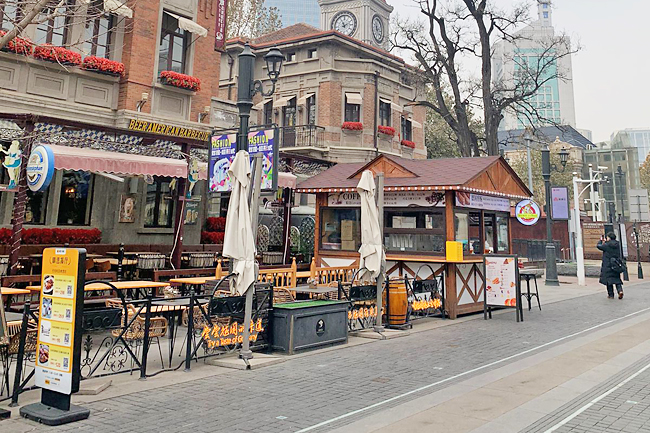Our last day in Beijing led us on a two-hour journey to Tianjin, China’s seventh-largest city. The anticipation was palpable, especially upon discovering that one of the highlights would be the renowned Italian Style Town.
For those unfamiliar with Tianjin, it lives up to its reputation. The city exudes a distinctive cultural charm, showcasing a wealth of historical and cultural heritage. The Ancient Culture Street, with its unique architectural style, and shop decorations captivate visitors with a robust artistic atmosphere.
RIVERSIDE ARRIVAL
Arriving in Tianjin after a lengthy drive, everyone headed towards the entrance of the Italian Style Town, situated along the majestic Haihe River – the mother river of Tianjin.
The riverbanks offered a scenic and soothing view, surrounded by the bustling streets of Tianjin.
As night fell, we learnt about the romantic option of strolling between Tianjin Eye in the north and the beautiful Daguangming Bridge in the south. Alternatively, appreciating the beautiful scenery by boat along the river was described as an amazing experience.
Unfortunately, our time was limited, and we couldn’t partake in these activities within our brief stay.

A quick history lesson on this renowned tourist street: originally designated for Italian colonists in Tianjin in the early 19th Century, it remained under Italian occupation until the end of World War II. Post-war, it was handed over to local Chinese authorities. In 1999, Tianjin’s government partnered with a construction corporation to transform the street into the Italian Style Town. Completed in 2005, it officially opened to the public in 2008, quickly becoming a top destination, earning a class 4A tourist rating.
Despite its name, the street features more than just Italian offerings. Western restaurants, including German and French options, co-exist with stalls selling various products. During my visit in winter, most stalls were focused on winter items.
EUROPEAN CHARM IN EASTERN STREETS
With the festive season approaching, the street was adorned with festive trees, lights, and tunes playing in the operating establishments.
As I strolled through the streets, the historical lavish residences with Western architecture transported me to the streets of Milan or Rome, creating a chilled and peaceful atmosphere.
At the centre, there was an ice-skating rink, but I got distracted by a phone call. By the time I was done, I decided to skip it as the meet-up time was close. Heading to the meeting point, I felt a hint of regret; while I may not know how to skate, a quick photo in the gear would have sufficed for me.
Back on the van, we crossed the iconic bridge and headed to Ancient Culture Street on the west bank of Haihe River. This renowned spot lures both international tourists and locals from all over China, drawn by its architectural marvels, unique handicrafts, and tempting local snacks.
The street boasts buildings replicating the classical architecture of the Ming and Qing dynasties, constructed in the 80s using traditional Chinese blue-bricks. The doors and windows are adorned with vibrant paintings, reminiscent of Penang’s heritage sites, giving it an authentic touch.
Officially opened in 1986, the paintings depict tales ranging from legendary figures and historical events to scenes from Chinese classical novels, captivating visitors with a passion for distinctive architectural designs and beautifully crafted artwork.
Just like everyone else, my roommate and I ventured into the street, exploring stores that caught our interest and sampling local snacks like dried fruits. Recognising us as tourists, the friendly sales staff guided us through the tasting, highlighting the benefits and medicinal remedies of each item.
Impressed by their efforts, we ended up purchasing several items, and they bid us farewell with a friendly gesture and smiles, clearly pleased with our contribution to their daily sales.
Continuing our stroll, we encountered classical folk-style architecture, though they were splendid replicas perfect for photo ops. Here, you’ll also find an array of stores selling diverse folk handicrafts, attracting both local and international tourists. Particularly appealing to enthusiasts of Chinese jade and pottery, this place offers good bargains.
After checking the time, we headed to our meeting point before experiencing a unique Tianjin-style halal Syabu-Syabu, notable for its distinctive presentation and taste.
As we departed from Tianjin after lunch, our initial excitement gave way to a yearning for a nap during the lengthy journey back to the hotel. With the impending early morning flight home, the tasks of packing and resting awaited us, concluding our memorable adventure. – Lyna Mohammad




